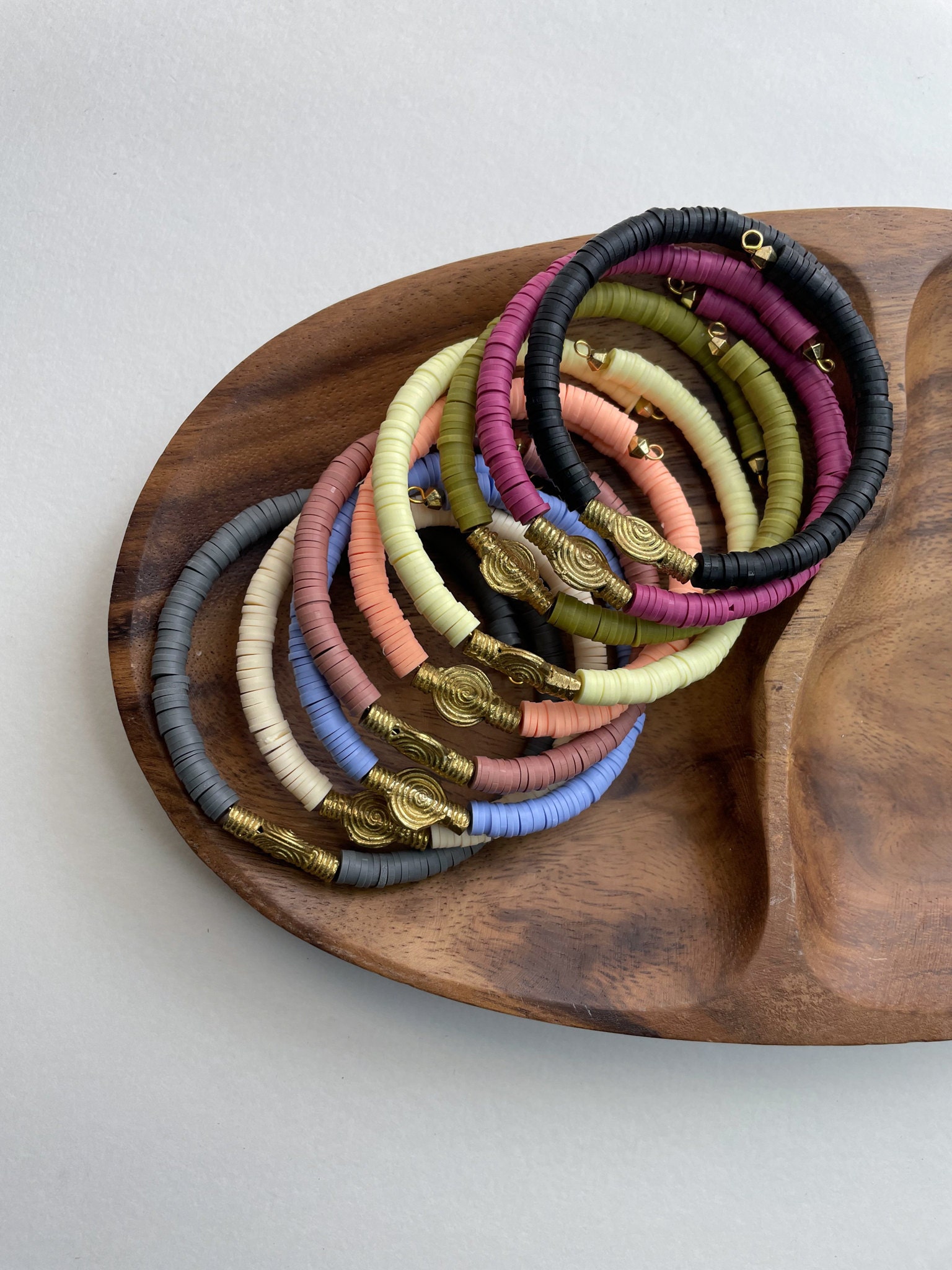Heishi beads, small disc-shaped adornments with a rich cultural history, trace their origins to the Santo Domingo Pueblo of New Mexico, where the term "heishi" means "shell." Crafted from materials like shells and stones, the Pueblo people perfected the art of shaping and drilling tiny pieces into uniform discs, stringing them together to create exquisite necklaces and jewelry.
While heishi beads have strong roots in Native American cultures, evidence of similar techniques exists globally. In East Africa, the Maasai people fashion vibrant, heishi-style beads from bone, wood, and seeds, symbolizing cultural identity and life events. The Mediterranean region, particularly Greece, also reveals archaeological findings of heishi-style beads crafted from materials like clay and semiprecious stones.
The Spanish colonization of the Americas played a pivotal role in spreading the influence of heishi beads. As trade routes expanded, these beads became coveted items, reaching collectors worldwide. The Santo Domingo Pueblo's mastery of bead-making became a focal point of trade, showcasing the adaptability of heishi-style techniques across different materials and regions.
In the mid-20th century, heishi beads experienced a revival during the bohemian and hippie movements. The desire for handcrafted, culturally rich accessories led to a renewed appreciation for heishi-style jewelry. Artisans blended traditional and modern techniques, creating a fusion of tradition and modernity that resonated with a new generation.
Today, heishi beads continue to captivate jewelry enthusiasts and collectors alike. Artisans globally employ both traditional and modern techniques, using various materials to create these iconic beads. Whether crafted from natural materials like shells and stones or contemporary materials like polymer clay and metals, heishi-style beads remain a testament to the enduring appeal of handmade craftsmanship across diverse cultures throughout history.

